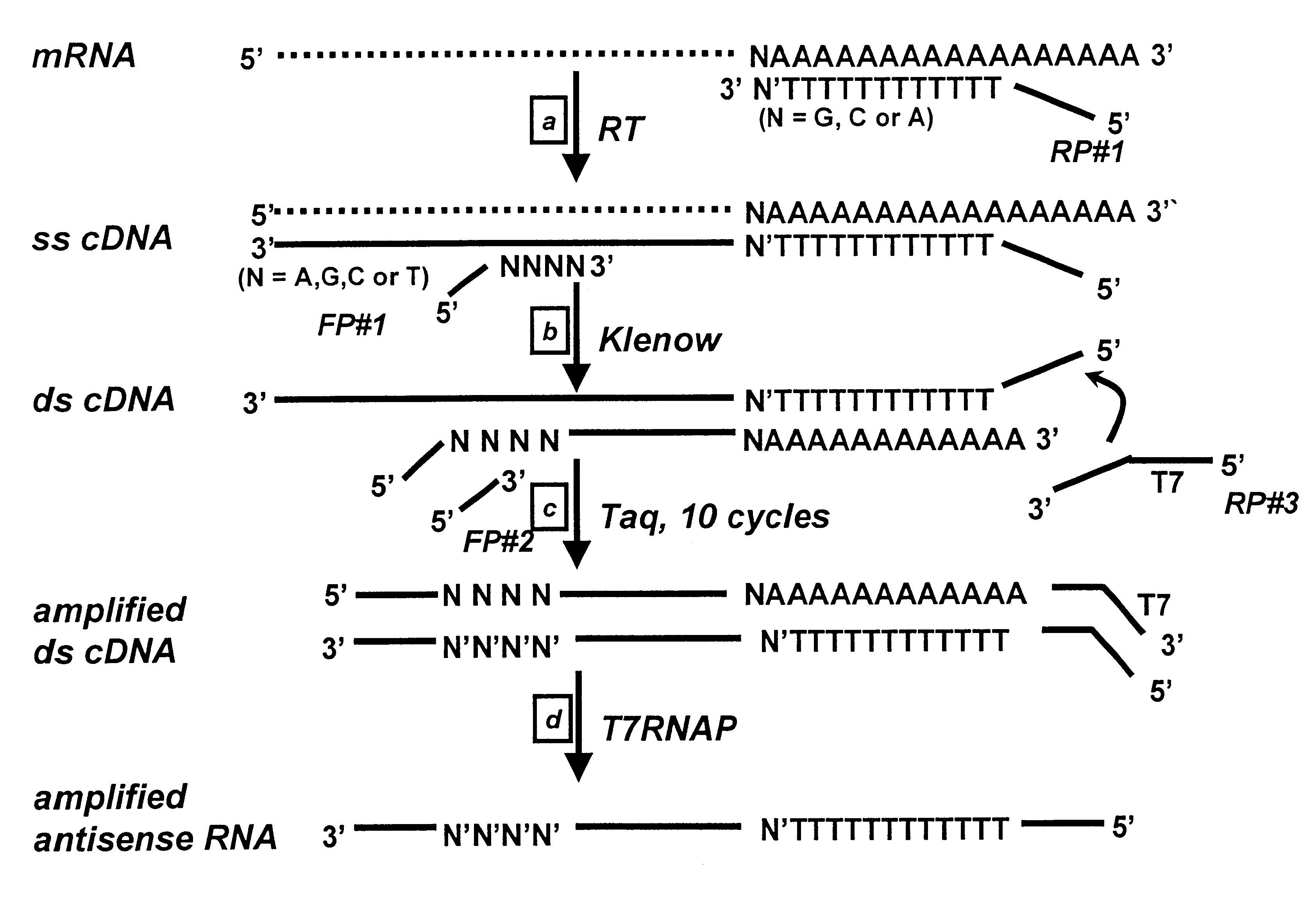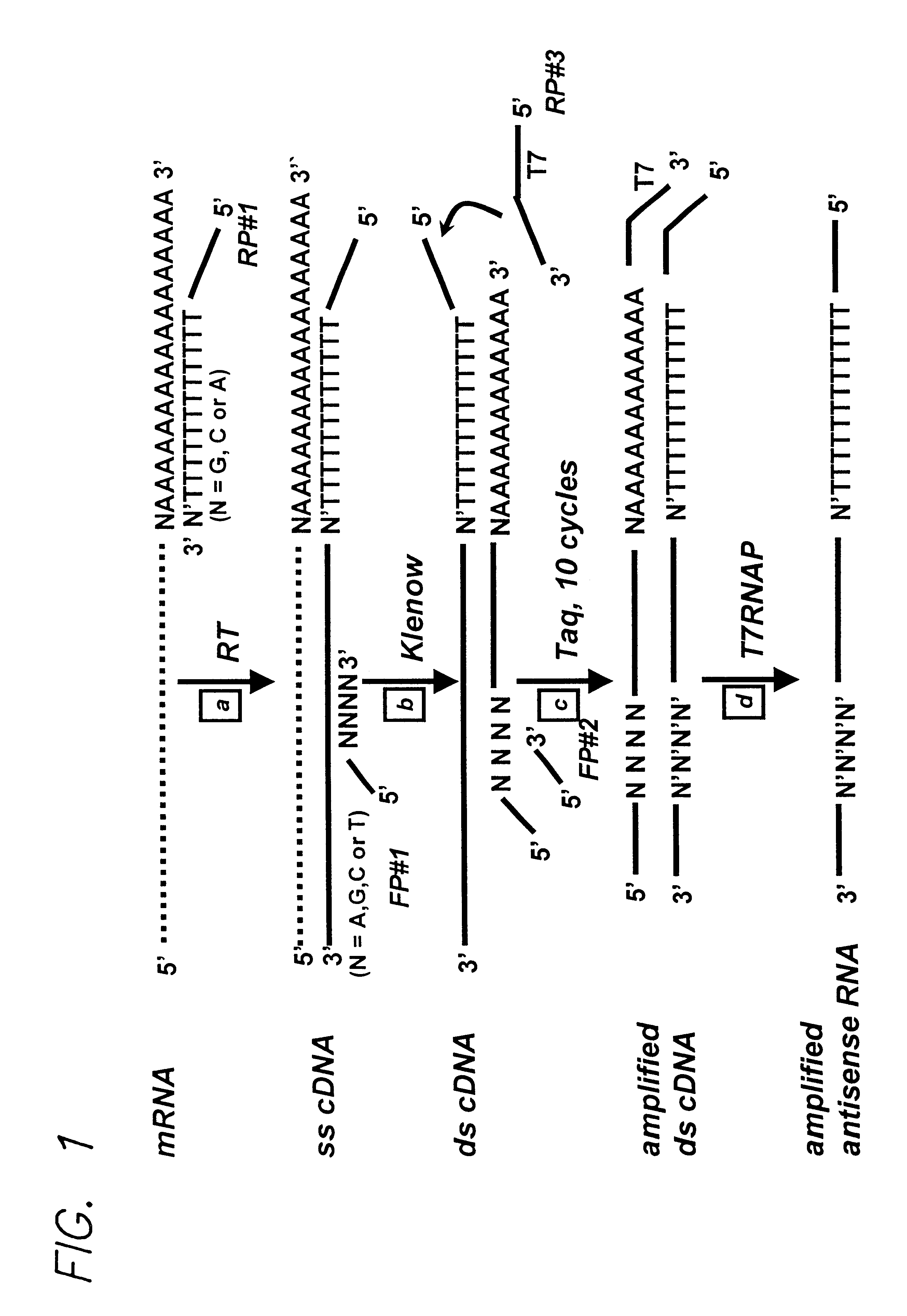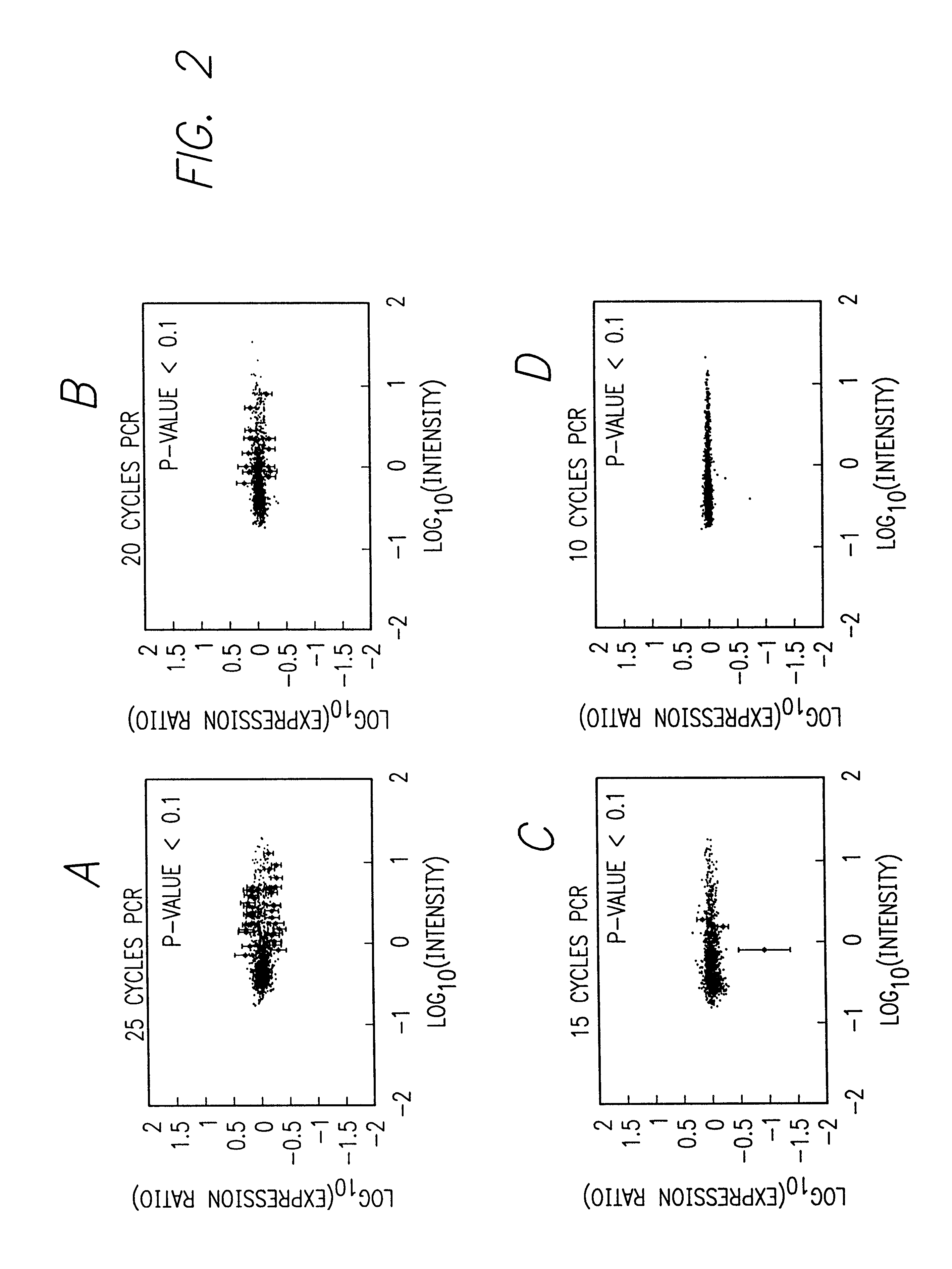RNA amplification method
- Summary
- Abstract
- Description
- Claims
- Application Information
AI Technical Summary
Benefits of technology
Problems solved by technology
Method used
Image
Examples
example 1
6. EXAMPLE 1
Numerous Cycles of PCR Amplification of mRNA from Yeast Introduce Biases
This example demonstrates that increasing cycles of PCR amplification introduce more biases, i.e., differences between replicate samples that limit transcript representation fidelity.
6.1 MATERIALS AND METHODS
The sequences of reverse primers RP#1, RP#2 and RP#3 were overlapping and designed to hybridize to the same sequence.
Reverse primer RP#1 hybridizes to the 3' end of mRNA. RP#1 primer contains one degenerate base (V) as an anchor at its 3' end. The degenerate base may be A, G, or C.
RP#1 5' CCT CCT GCG AAG CTT TTT TTT TTT TTT V 3' (SEQ ID NO:1)
where V=A, G, or C.
Reverse primer RP#2 hybridizes to the 3' end of the sense strand of the ds cDNA:
RP#2 5' CCT CCT GCG AAG CTT TTT TTT TTT TTT 3' (SEQ ID NO:2)
Reverse primer RP#3 hybridizes to the 3' end of the sense strand of the ds cDNA:
RP#3 5' TAA TAC GAC TCA CTA TAG GGA GGA CCT CCT GCG AAG CTT TTT TTT TTT TTT 3' (SEQ ID NO:3)
RP#3 is a representative 3'-en...
example 2
7. EXAMPLE 2
PCR-IVT Amplification of mRNA from Yeast
This example demonstrates that it is possible to do fewer cycles of PCR-IVT amplification than were used for PCR in Section 6 (Example 1), and amplify sufficient amounts of cRNA to maintain sufficient sensitivity to detect small changes in expression of the least abundant RNAs in the sample.
7.1. MATERIALS AND METHODS
Total RNA was amplified, using the 3'-end PCR / IVT method of the invention, from wt yeast and from a yeast strain having a homozygous deletion in the swi4 gene. Briefly, total RNA from each strain was reverse transcribed into ss cDNA using the RP#1 primer, then converted to ds cDNA using the Klenow enzyme and the FP#1 primer. The resultant ds cDNAs were then subjected to 10 cycles of amplification by PCR using the RP#3 primer and the FP#2 primer. The PCR-amplified cDNAs were then transcribed into RNA by reaction with T7 RNA polymerase for 16 hours at 37.degree. C. The RNAP promoter introduced during the PCR step supports...
example 3
8. EXAMPLE 3
Gene Regulation Profiles Detected with PCR-IVT Amplified Antisense RNA
This example demonstrates that the gene regulation profiles detected with antisense RNA amplified by the PCR / IVT method and with cDNA prepared by conventional reverse transcriptase methods are similar.
8.1. MATERIALS AND METHODS
Cultures of S. cerevisiae were treated with increasing concentrations of the immunosuppressive drug, FK506, as described by Marton et al. (Nature Med. 4: 1293-1301, 1998). Total cellular RNA was prepared from each culture and split into two aliquots. One aliquot was subjected to PCR / IVT amplification, and antisense RNA was derivatized with allylamine-UTP as described in Sections 6 and 7, and in FIGS. 1 and 3. From the second aliquot of total cellular RNA, polyA+ RNA was prepared and used as template for first strand cDNA synthesis. cDNA was labeled with Cy3 or Cy5 using the two step labeling procedure depicted in FIG. 1, except that allylamine-derivatized dUTP was incorporated du...
PUM
| Property | Measurement | Unit |
|---|---|---|
| Length | aaaaa | aaaaa |
| Fraction | aaaaa | aaaaa |
| Length | aaaaa | aaaaa |
Abstract
Description
Claims
Application Information
 Login to View More
Login to View More - R&D
- Intellectual Property
- Life Sciences
- Materials
- Tech Scout
- Unparalleled Data Quality
- Higher Quality Content
- 60% Fewer Hallucinations
Browse by: Latest US Patents, China's latest patents, Technical Efficacy Thesaurus, Application Domain, Technology Topic, Popular Technical Reports.
© 2025 PatSnap. All rights reserved.Legal|Privacy policy|Modern Slavery Act Transparency Statement|Sitemap|About US| Contact US: help@patsnap.com



